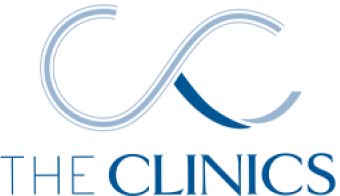
Breast Reduction
Breast reduction, known medically as Reduction Mammoplasty, is a cosmetic surgery procedure designed to reduce the size of a woman’s breasts.

What is Breast Reduction?
Breast reduction, known medically as Reduction Mammoplasty, is a cosmetic surgery procedure designed to reduce the size of a woman’s breasts. This type of surgery can be performed for cosmetic or medical reasons (often both).
During a breast reduction, the plastic surgeon will remove excess fat and tissue from the breasts. Liposuction may be performed on the sides or around the breasts to create additional contour and lifting effect. Breast reduction surgery can be accompanied with breast lift surgery, for patients with uneven or sagging areolas and breast tissues.
Depending on size and position of the areolas around the nipple, the surgeon can even out the areolas. The surgery is done in the operating room under general anesthesia.
Common Breast Reduction Techniques
“Inverted-T” or Anchor Technique: Considered the gold standard, particularly when significant tissue removal and reshaping are required. The surgeon will create an anchor-shaped incision around the areola which continues down the center of the lower breast and along the crease.
“Lollipop” or Vertical Incision Technique: This type of incision produces a shorter scar compared to the Anchor technique. The incision is made around the areola which continues down the center of the lower breast, without the horizontal incision along the crease.
“Donut” or Circumareolar Technique: Also known as the periareolar technique, this method involves making an incision around the perimeter of the areola. It produces one short scar that can be concealed in the areola. It’s best suited for patients who require only minimal reduction in breast tissue.
Why Have a Breast Reduction?
A woman may choose to have a breast reduction for the following reasons:
Medical: The size and weight of a woman’s breasts can cause physical discomfort and health issues. She may experience chronic back, neck and shoulder pain, poor posture from hunching forward, deep indentations from bra straps digging into the skin and skin rashes. Furthermore, having excessively large breasts can make it challenging to engage in physical activities.
Mental health: Excessively large breasts may cause a woman undue emotional distress. She may feel her breasts are not proportional to the rest of her body, or one breast may be larger than the other. This may bring on feelings of anxiety, depression and low self-esteem. There are practical considerations as well, such as not being able to find undergarments and clothing that fits properly.
FAQ’s
How long do the results of the breast reduction last?
For the most part, breast reduction results are long-lasting. Factors such as aging, fluctuations in weight and pregnancy can affect the long-term outcome.
Are the scars visible after a breast reduction?
Yes there will be visible scars after your breast reduction surgery. The type of scars will depend on the incisions, such as Anchor, Vertical or Circumareolar technique. The scars will gradually fade over time. Scar management products such as silicone sheets or creams can improve the appearance of your scars and help them heal more quickly.
Can I breastfeed after a breast reduction?
For some women, a breast reduction can impact breastfeeding. Since large amounts of breast tissue are removed, some of the milk ducts may be impacted by the surgery. It’s best to speak to your surgeon about all the possible complications.
Can breast reduction be combined with other procedures?
Breast reduction can be combined with other procedures such as a breast lift (mastopexy), or during a “Mommy Makeover” where breast enhancement and tummy tuck are performed at the same time.
We invite you to book a consultation with one of our expert plastic surgeons to find out if breast reduction is right for you.

LipoCryo Quick Facts:
| Cost of LipoCryo | TBD |
|---|---|
| Duration of Treatment | 2-4 hours |
| Days of Social Downtime | 1-2 weeks |
| Hospital Stay Required? | Yes, up to 24 hours |
| Pain Management | None |
| Stitches Removed | 5-7 days |

After Surgery:
Downtime and recovery: Each person experiences the recovery period differently. Your unique healing journey will be based on proper after-care and how quickly your body recuperates after surgery. Below are some general guidelines for what you can expect:
1-2 Days Post-Op: You will wake up from surgery with your breasts wrapped in bandages and wearing a special surgical bra to provide support and minimize swelling during your recovery.
You may have drainage tubes inserted to remove excess fluid. These will be removed after several days. At this point you will experience some pain and discomfort and your surgeon will prescribe pain medication to keep you comfortable.
You will be kept in the recovery room under observation for up to 24 hours. After that you will require someone to pick you up and drive you home, as well as assist you during this initial recovery phase which can take up to two weeks.
1 Week Post-Op: You will continue to experience some pain, bruising, swelling, and soreness. These will gradually subside over the coming weeks. Getting adequate rest is very important during this time and you should take care to avoid strenuous physical activity. You will need to continue wearing your surgical bra for the next six weeks, except when bathing.
2-4 Weeks Post-Op: You will require less and less medication, if any, for pain management. Light, non-strenuous activities may be resumed after two weeks, although avoid lifting heavy objects as you are still healing. Continue wearing your surgical bra as per your surgeon’s instructions.
4-6 Weeks Post-Op: Most pain, swelling and bruising should be resolved. You’ll feel well enough to resume regular activities such as shopping, working and exercise. At this point you may want to start thinking about using scar management products such as silicone sheets or creams. Make sure to attend all follow-up appointments diligently.
What to Expect Before Surgery:
Follow pre-operative instructions: You will be provided with detailed pre-operative instructions by your surgeon. These may include avoiding medications that promote bleeding, making sure you have all the medications you’ll need post-operatively and when to stop eating and drinking the night before.
Wear the right clothing: Choose comfortable, loose-fitting clothing such as button-up tops or dresses. Avoid wearing clothes that require raising your arms to be put on and removed.
Arrange for help: You will need someone to pick you up from the clinic or hospital and take you home. You will also require assistance during your initial recovery period, up to two weeks. You may also need help getting to your first post-operative appointment in 5-7 days.
How to Prepare for Breast Reduction
Do your research: A consultation and medical evaluation with a qualified Plastic Surgeon is the first step in preparing for a breast reduction. During your initial meeting you can learn more about the procedure, discuss your concerns, treatment objectives and whether you’re a good candidate for the surgery. You can also discuss possible risks and complications, and the recovery process.
If you decide to proceed with the surgery, the following recommendations will help you get through surgery with minimal complications and ensure the best outcome possible:

Quit Smoking
If you’re a smoker it’s best to quit smoking at least six weeks in advance. Nicotine and other chemicals in tobacco can constrict blood vessels and impair your body’s ability to heal adequately post surgery.

Lose excess weight
Losing or gaining a significant amount of weight after surgery can affect your breasts’ appearance in unexpected ways. For this reason, it’s best to achieve your ideal body weight prior to the procedure.
ELEGIBILITY Who is a Good Candidate
The ideal candidate is someone with excessive breast tissue, in combination with persistent and well-documented physical or emotional symptoms. Here are some other factors to consider:
Good overall health: A woman should be in excellent health and a non-smoker. This includes having a healthy body weight with no serious physical conditions (such as breast cancer) that could affect the outcome or be a contraindication to surgery and general anesthesia.
Breasts have reached maturity: A woman’s breasts should be fully developed before performing this type of surgery. This could mean waiting until she is in her late teens or early 20’s. Ultimately, it’s up to the surgeon’s discretion to ensure the safety of the patient.
Finished having children: Breastfeeding following a breast reduction could be impacted by the surgery. It’s best to finish having your family before undergoing this type of surgery.
Have realistic expectations: Although a breast reduction can alleviate many of the physical and emotional symptoms associated with larger breasts, it may not produce a “perfect” breast shape. If someone is considerably overweight, their physical challenges due to weight may still remain. A positive attitude and knowing what to expect ahead of time can ensure a satisfactory outcome.




